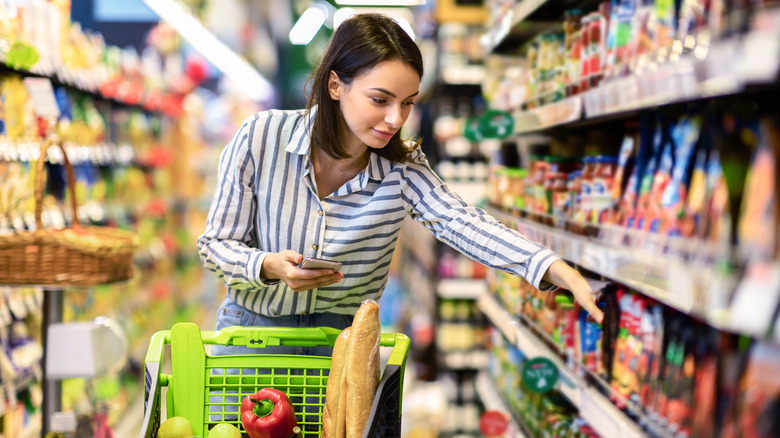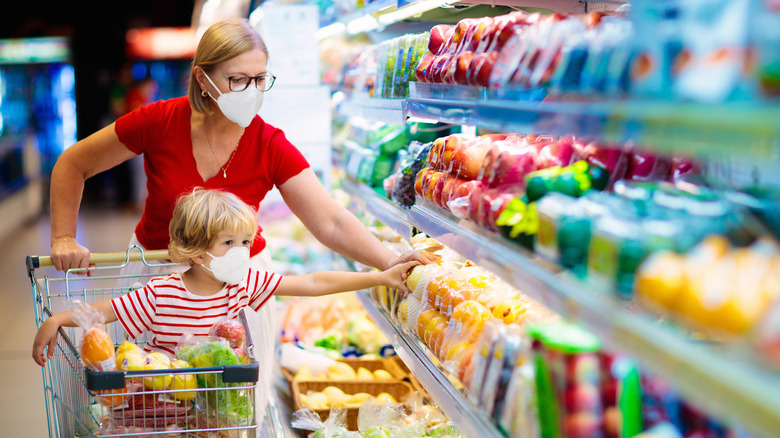The Clever Way Grocery Stores Stock Products
It's no secret that many folks dig the spirit of the shopping trip. According to BrainyQuote, even French existentialist philosopher Simone de Beauvoir once said, "Buying is a profound pleasure." In fact, depending on who you ask, getting groceries can be a chore — but, a jaunt to the grocery store can also be just as fun as any other shopping spree. The key to a pleasant trip, believe it or not, just might be how your local supermarket is laid out.
Supermarkets stock shelves with the customer's neurological pleasure center in mind. Sound scientific? It is. According to industrial appliance purveyor Ancaster Food Equipment, "Eye level is buy level." To encourage shoppers to reach for popular products, grocery stores stock the goods they most want to sell at eye level. "Customers are more likely to buy what they can easily see," explains Ancaster — and it's a theory that works.
Per retail analytics platform Shopify, 40% to 80% of all purchases are impulse buys. When the term "impulse buy" comes to mind, you might think the term only applies to fun splurges on a checkout line like candy bars or a pair of headphones, but you should actually think again. Less than half of grocery purchases are pre-planned, says Shopify; the majority are impulse buys. Here's the clever way grocery stores stock products, and how it's specifically designed to make customers happy.
Eye level is buy level
According to Mobile Insight, visual merchandising is all about product placement — and even the directionality of a display can make a subliminal difference. Horizontal displays, like the eggs, milk, butter, and yogurt in many grocery store dairy sections, subtly imply that there's a broad selection of options for customers to choose from.
Unless they have a particular product in mind, says Modern Retail, most customers won't grab or even consider items they have to reach for. This is called the "Stretch Level," and it refers to products on shelves 180 cm (just under 6 feet) or higher. For optimal convenience, visibility, and encouragement to buy, grocery stores keep popular products at "Eye Level/Buy Level," at around 122 cm to 152 cm (about 4 to 5 feet). Similarly, "Touch Level" — the best space for children's snacks and candy — is around 90 cm to 120 cm (3 to 4 feet).
By the same logic, if grocery stores are trying to promote a particular new-release item, Ancaster Food Equipment recommends placing the new introduction beside regularly reached-for faves. That way, the new product's exposure is increased, and folks are more likely to give an unfamiliar product a try if it's displayed alongside a familiar one. Plus, by making popular items easy for shoppers to find, the streamlined convenience saves folks from a taxing, unpleasant, in-store grocery shopping experience, likely making them more willing to visit the store again in the future. Modern Retail says, "Making life easy for shoppers is one of the most effective ways to encourage sales."

